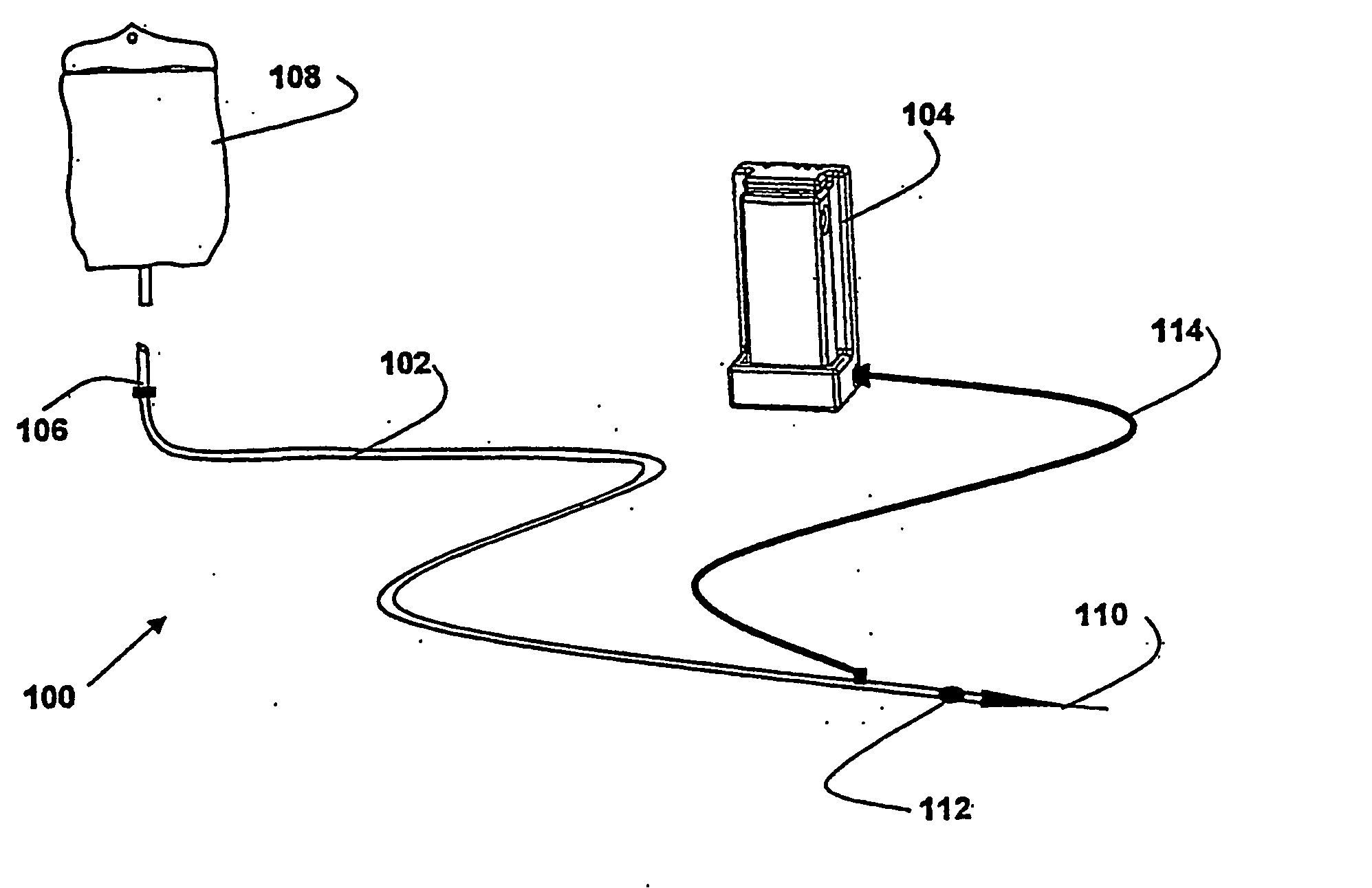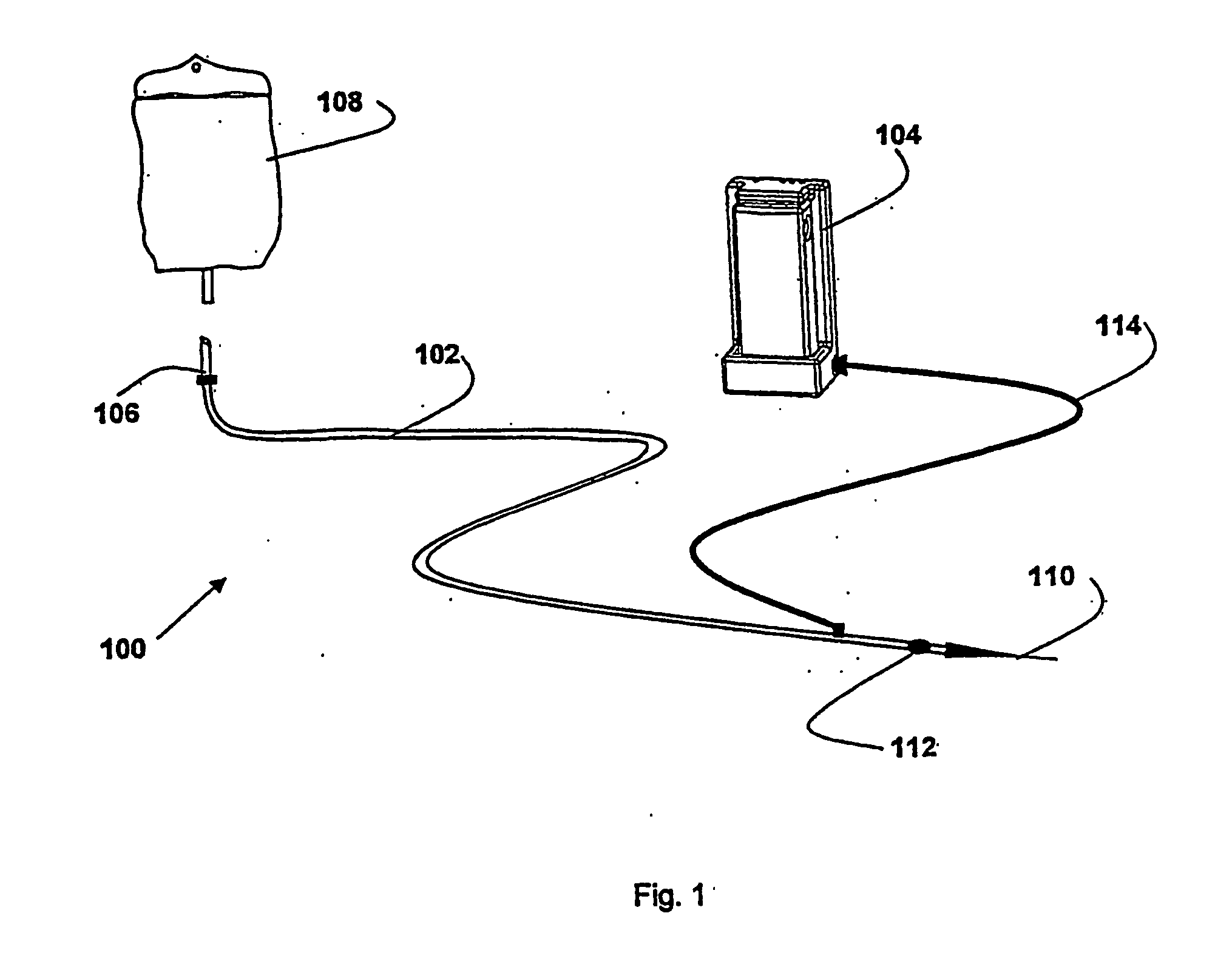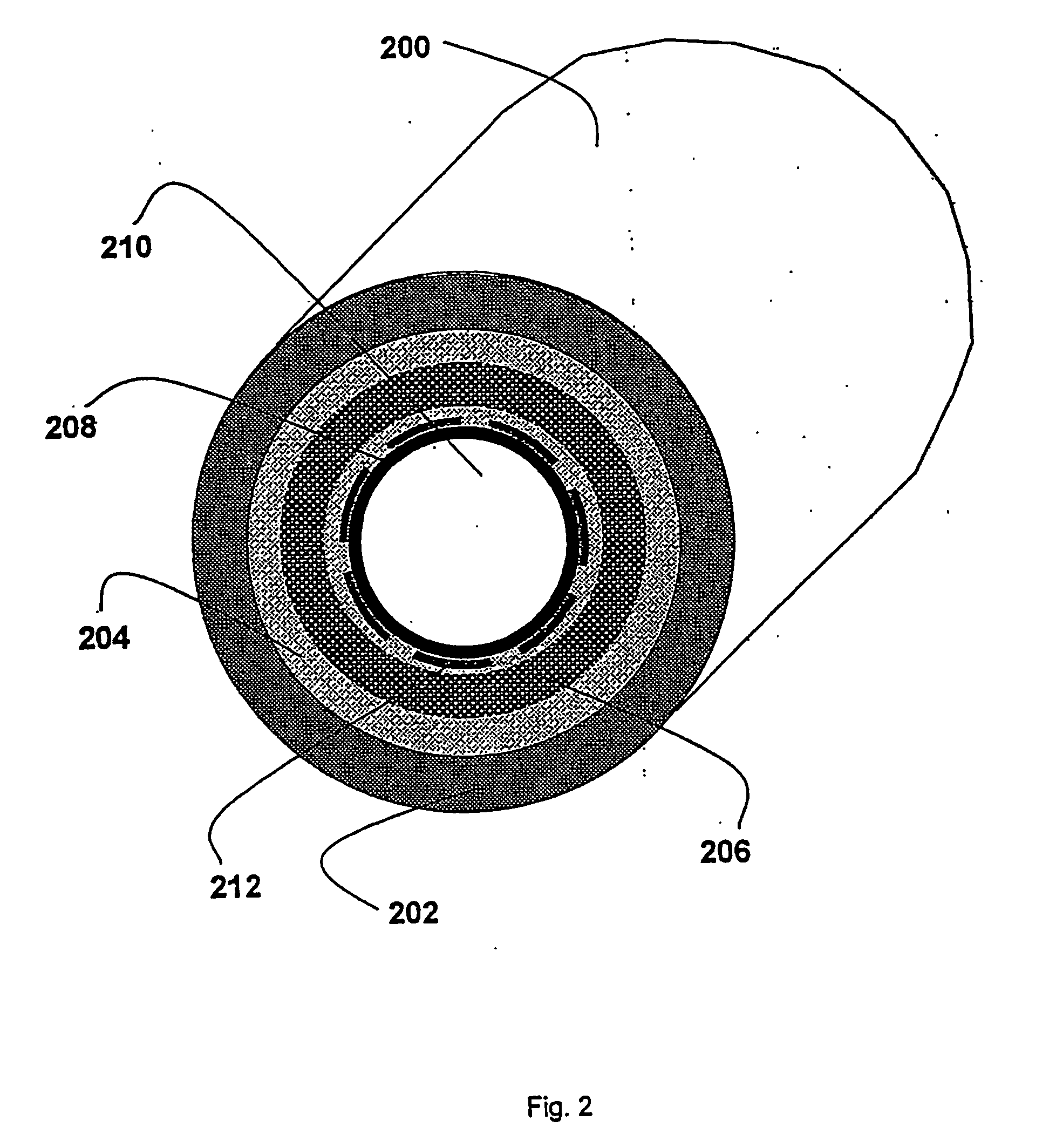Methods and system for warming a fluid
a technology of fluid temperature and method, applied in the field of method and system for controlling the temperature of fluid, can solve the problems of harm to an individual, methods and systems available to suitably warm fluids have several limitations in common, lack of portability, etc., and achieve the effect of reducing or limiting the damage to fluid and/or patient, and being convenient to us
- Summary
- Abstract
- Description
- Claims
- Application Information
AI Technical Summary
Benefits of technology
Problems solved by technology
Method used
Image
Examples
example 1
Development of Algorithms Useful in the Fluid Warmer of the Present Invention
[0138] In one embodiment, the fluid warming device of the present invention uses at least two and preferably three thermocouples placed in the inner lumen at points distal, medial and proximate to the patient. The thermocouples measure the temperature of the fluid being warmed at its inlet, midpoint and outlet. The temperature is taken within the actively heated areas in all cases. An additional thermocouple measures the temperature of the heater wire. Alternatively, for a heater wire of known total resistance (determined by known wire properties and length), the heat generated can be calculated using the input current or voltage. The algorithm developed and described here is based on know parameters such as heater wire diameter, coil density per linear foot of wrap along the inner lumen, inner and outer lumen wall thickness, material and diameter. The heater wire of the invention can made of any heatable ...
PUM
 Login to View More
Login to View More Abstract
Description
Claims
Application Information
 Login to View More
Login to View More - R&D
- Intellectual Property
- Life Sciences
- Materials
- Tech Scout
- Unparalleled Data Quality
- Higher Quality Content
- 60% Fewer Hallucinations
Browse by: Latest US Patents, China's latest patents, Technical Efficacy Thesaurus, Application Domain, Technology Topic, Popular Technical Reports.
© 2025 PatSnap. All rights reserved.Legal|Privacy policy|Modern Slavery Act Transparency Statement|Sitemap|About US| Contact US: help@patsnap.com



